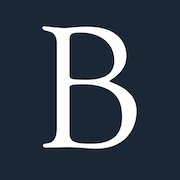The Benefits of Integrating Private Foundations and DAFs
- Private foundations and donor-advised funds are two options for high-net-worth clients to formalize their giving strategies while mitigating taxes.
- Using both private foundations and DAFs can provide a powerful framework for clients to pursue effective and sustainable philanthropy.
- The integration of private foundations and DAFs can optimize tax benefits, reduce administrative burdens, and facilitate multigenerational legacy planning.
- Private foundations offer long-term initiatives, while DAFs offer flexibility in responding to immediate needs.
- Contributions to both private foundations and DAFs are generally tax deductible, allowing clients to maximize deductions and give more.
- Using both vehicles allows for selective anonymity in giving.
- Private foundations offer opportunities for creativity beyond financial donations.
- DAF sponsors handle administrative responsibilities, relieving donors of burdens.
- Using both private foundations and DAFs provides clients with new and flexible options to meet their wealth management goals and philanthropic efforts.
When it comes to formalizing giving strategies and mitigating taxes, high-net-worth clients often consider the benefits of private foundations and donor-advised funds (DAFs). While each option has its advantages, integrating both can provide a powerful framework for effective and sustainable philanthropy.nnPrivate foundations, typically established with a significant endowment, allow individuals, families, or corporations to make grants as their main form of giving. On the other hand, DAFs are charitable giving accounts established at a sponsoring organization, where donors contribute and recommend grants over time.nnBy using both private foundations and DAFs, clients can diversify their giving strategies. Private foundations offer a charitable framework for long-term initiatives, while DAFs provide flexibility in responding to immediate needs or developing crises. This combination allows donors to be agile in reacting to unforeseen events while executing on a longstanding mission.nnOne of the significant advantages of integrating private foundations and DAFs is the increased tax benefits. Contributions made to both entities are generally tax deductible. By distributing charitable assets across these two structures, clients can maximize deductions and free up additional resources to give even more. This can be especially advantageous for clients with significant income in a particular year.nnSelective anonymity is another reason to use both private foundations and DAFs. While private foundations are legally required to record their grants on tax returns, DAFs can make anonymous grants. This flexibility allows clients to give outside their stated mission or provide discretionary granting privileges to family members. It also presents an opportunity to engage the next generation in philanthropy by allowing them to participate in causes meaningful to them.nnPrivate foundations offer opportunities for creativity beyond financial donations. They can directly fund or actively participate in running their own programs, invest in mission-aligned companies, and give directly to individuals in the form of hardship grants or scholarships. However, administrative tasks can make it challenging for foundations to focus on these strategies and legacy building. DAF sponsors alleviate administrative burdens by handling responsibilities such as record-keeping, due diligence on grant recipients, and compliance.nnBy harnessing the strengths of both private foundations and DAFs, clients can create a philanthropic strategy that resonates with their values and drives positive, long-lasting change. The integration of these two vehicles optimizes tax benefits, reduces administrative burdens, and facilitates multigenerational legacy planning. It provides clients with new and flexible options to meet their wealth management goals and supercharge their philanthropic efforts.·
Factuality Level: 2
Factuality Justification: The article provides detailed information about the benefits of using both private foundations and donor-advised funds for philanthropic purposes. However, it lacks objectivity and contains promotional language that may bias the reader. The article also focuses heavily on the advantages of using both vehicles without discussing potential drawbacks or alternative perspectives.·
Noise Level: 3
Noise Justification: The article provides a detailed comparison between private foundations and donor-advised funds, highlighting the benefits of using both. It offers insights into tax benefits, selective anonymity, flexibility, and simplicity of utilizing both vehicles for philanthropic efforts. The content is relevant and informative, supported by examples and explanations, without excessive repetition or irrelevant information.·
Private Companies: Foundation Source
Key People: Gillian Howell (Responsible for overseeing the client services and philanthropy advisory services functions at Foundation Source)
Financial Relevance: Yes
Financial Markets Impacted: Tax benefits and wealth management
Financial Rating Justification: The article discusses the integration of private foundations and donor-advised funds in financial planning for high-net-worth clients, focusing on tax deductions, philanthropy, and wealth management strategies. It also mentions the impact on administrative burdens and legacy planning.
Presence Of Extreme Event: No
Nature Of Extreme Event: No
Impact Rating Of The Extreme Event: No
Extreme Rating Justification: There is no mention of any extreme event in the article. It primarily discusses the benefits and strategies of using private foundations and donor-advised funds for philanthropy.·
 www.barrons.com
www.barrons.com 




